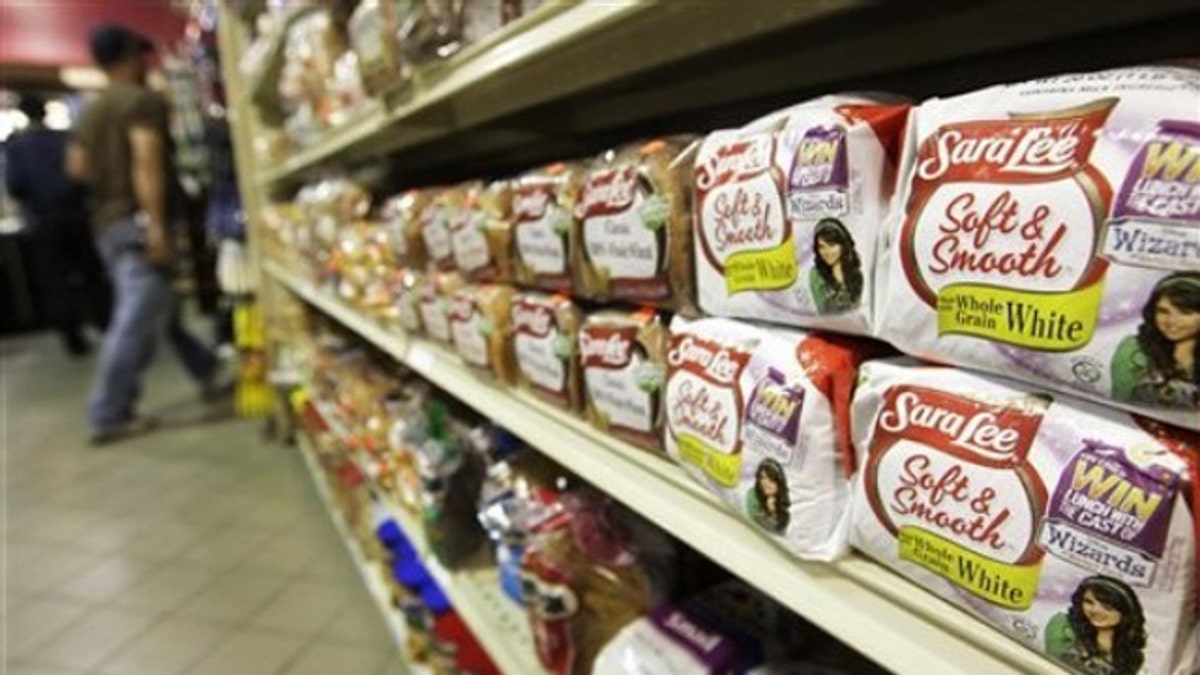
Shown here are the shelves at a grocery store Aug. 12, 2009, in Chicago. (AP Photo)
The number of Americans receiving federal aid through the Supplemental Nutrition Assistance Program, commonly known as food stamps, soared to a record 40.8 million in May, according to government data released shortly before the Senate voted to cut billions from the food stamps budget.
The Senate voted Thursday to cut $12 billion from the program in order to help fund a $26 billion package to help states avoid teacher layoffs.
But according to U.S. Department of Agriculture figures, the number of people on the food stamp rolls has been growing to record levels for 18 straight months. Nearly $5.5 billion in aid went out to beneficiaries in May alone. The number of May recipients marked a 19 percent increase from a year ago.
"That is a historic high," USDA spokeswoman Jean Daniel said.
The sustained increase in food stamp recipients coincides with sustained high unemployment. The jobless rate dipped to 9.5 percent in June, but has hovered above 9 percent since mid-2009.
Daniel said the food program was intended to take in lots of people during times of economic hardship.
"That's exactly the way the program was designed many years ago -- it was designed to expand and contract based on economic conditions," she said.
Daniel said the department does not have projections showing when the increase might level off, but he cautioned that reductions in enrollment typically lag behind changes in the unemployment rate. If the jobless rate goes down, it could take several months before the number of food stamp recipients falls accordingly.
Daniel said many of the recipients are unemployed and have never gone on food stamps before in their lives.
"This is really low-income and people who are very much in need," she said.
Treasury Secretary Timothy Geithner said in an interview Monday that the jobless rate could rise again but the economy is "gradually healing."
The USDA projects that next year's enrollment will reach about 43.4 million.
The trend has raised concerns about cuts to the longstanding aid program.
The Food Research and Action Center opposed the cut voted on Thursday by the Senate, along with another cut under a separate nutrition bill, saying the benefits are inadequate as it is.
"The benefits aren't big enough," James Weill, the organization's president, said. "If the only way this Congress can find to pay for anything is to keep cutting families' food stamp benefits, then the country is in even deeper trouble than we thought before."
The group said a family of four would see benefits drop about $59 per month starting in 2014, presuming the House approves the Senate bill. The reduction could start earlier if a separate cut is approved.
Daniel said it's unclear what impact the $12 billion cut will have on the program, but he noted that the 2009 stimulus bill increased benefits by more than that and insisted the USDA had enough money in the budget to handle the growing number of beneficiaries.
Senate Majority Leader Harry Reid has reportedly committed to addressing concerns about the cuts.
The aid is available for recipients with incomes near the poverty line. The average monthly benefit for individual recipients in May was about $134, practically unchanged from a year ago.
Food stamps programs date back 70 years -- the first was started in 1939 and the idea was revived during the 1960s after a long hiatus. About a half-million people participated in 1965, but enrollment has since grown substantially. The name Food Stamp Program was changed to the Supplemental Nutrition Assistance Program in 2008.




